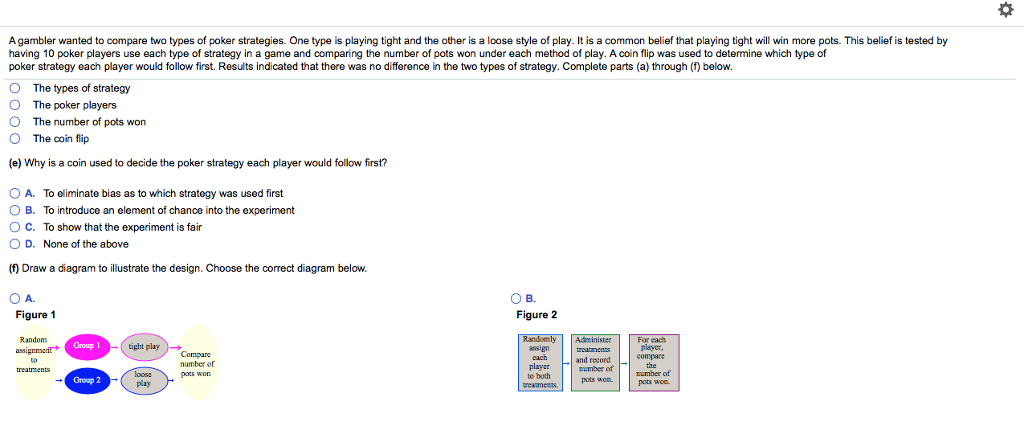Loose Player
You're a solid player, winning at the $1/$2 level in your nearby card room. You play a disciplined, tight-aggressive game. You know well how your starting cards are likely to stack up against those of your opponents, and you understand how to be aggressive in the right spots.
Hell Let Loose Player Base
The term “Loose” in this case refers to starting hand selection, while “Aggressive” refers to post-flop betting. Players who employ a LAG style play a wide range of starting hands with the hopes of outplaying their opponents after the flop and reducing opponents’ capabilities of putting them on a specific hand. A good loose-aggressive player, or LAG, at your table is a constant thorn in your side. Such players will frequently raise and three-bet preflop, fire more than their fair share of continuation.
You've learned to read your opponents fairly well, and can often separate out the aggressive moves that mean true strength from those desperation moves that mean weakness. You're able to average about $20 an hour, chiefly by being careful, taking advantage of your bad opponents' many mistakes, and staying away from the other good players in the room when they are in a hand. Perhaps your greatest skill is game selection, ably steering yourself into those games with the worst players and the fewest good opponents.
But you're bothered by the profit-depleting rake of 10% up to $5 a hand, with another $1 going to the bad beat jackpot and yet another buck when you win and tip the dealer. Though these charges seem relatively insignificant at the time, you're good enough and thoughtful enough to realize they really cut into your bottom line in the long run. So you've sought out and helped cultivate a home game.
But the game is giving you fits, primarily because of one guy — Stewart.
Stewart is known by many other names. Some call him a table bully. Others say he's a maniac. Still others label him a LAG — a loose-aggressive player. And that he surely is. He's hyper-aggressive. He's also excellent, in a way, as he seems to win a lot — at least when he doesn't go bust.
Your game in the public poker room is generally well-controlled, with you waiting patiently, picking your spots, and pushing your advantages when you have them. But you find that Stewart disrupts your home game. In that game, you aren't the guy that others fear. You don't set the pace of the game. Stewart does those things. And he does them to you.
You find yourself off-kilter, rarely winning. You hate to admit it, but Stewart is making you think about abandoning the game and heading back to the casino, even with its big rake.
Players Loose Tobacco
Is there anything you can do about this situation, short of figuring out a way of getting Stewart out of the game? That's the challenge for this column — to figure out how to beat the loose-aggressive player, or at least how to beat the game in which he's playing.
Here are five steps to take when Stewart — or someone like Stewart — becomes part of your home game.
1. Recognize the Problem
First and foremost, make yourself aware of what Stewart is doing to the game. A table bully is a problem for many sedate, thoughtful, good players in that the bully's involvement changes the nature of the game from the typical contest many are used to playing. Aggression, higher stakes, and bigger decisions tend to frustrate players who bet chiefly based on the absolute value of their hands.
Players can be dazzled by the constant flinging of chips and lose sight of what's most important. Similarly, players who are risk averse can be intimidated by what amounts to an increase in stakes as variance increases with a loose-aggressive player in the game.
2. Conquer Your Fear with Clear Thinking

The best way to overcome any trepidation about playing with Stewart is to strive to think clinically and objectively about his actions. You have to forget about the money by thinking clearly about what his aggression signifies.
A steady stream of bets necessarily means the starting standards of the bully are much lower than yours, and that his typical standards for raising and reraising are similarly lower. This means, generally, he has a much wider range than you have, which in turn means his average hand is going to be worse than your hand would have to be in a similar situation. This is exploitable.
3. Embrace the Variance
In such a situation, you must be willing to play more hands than you previously had by recognizing opportunities to take advantage of Stewart's weaker range. An uber-aggressive player in the game is going to make the pots bigger and the swings bigger — if you play as I suggest. Prepare for this both psychologically and financially.
If you can't handle the bigger swings, you can alter your optimal strategy by limiting losses with a shorter buy-in. Short buy-ins are a perfect counter-weight to anxiety over losses. You know, going in, that your stack will be limited, allowing you to call the large bets from your opponent (or to make your own large bets) without risking a huge percentage of your bankroll. You won't be able to maximize your wins by utilizing a short buy-in strategy, but by minimizing your losses you may put yourself on better footing psychologically, while also neutralizing many of the advantages that a LAG player might otherwise have over you.
But you must be ready to call bets before the flop when you judge your range to be stronger than the bully's, or when you otherwise think you might be able to exploit his wild style in later rounds.
4. Isolate the Bully with Your Own Aggression
It's not enough to be willing just to 'go along for the ride' against a very aggressive opponent. You must also concern yourself with the other players around the table. Ideally, you want to isolate your aggressive opponent with your own aggression.
Imagine a hand where you have and your maniac opponent raises in front of you. If you call along — as your nervous gut might encourage you to do — you may be enticing others, who also know the wild proclivity of your opponent to call behind you, attracted as they are to the pot you have enlarged by your presence.
You don't want that. You prefer going heads-up against wild Stewart, especially when you have a hand that may be only slightly better than his typical range. So raise him to lock out others who will be intimidated not by his bet but by your raise. True, they may have a stronger hands and might snap you off. But it is more likely if you call and let them call behind, they'll overtake your hand after the flop.
5. Remain Aware of the Other Players
Finally (at least for the purposes of this relatively brief article), don't let the bully's actions blind you to what the other players are doing. There's a tendency to become so focused on the bully that you fail to account for the strength of others in the hand. Keep in mind that others are allowed to have strong hands as well. In multi-way pots it's not enough just to beat the bully, you must beat the other players as well.
Conclusion

There are of course many other steps you can take to win in a game with a loose-aggressive player. Most are very hand specific and involve figuring out ways of exploiting your opponent based on the range of hands you think he is on in different situations. But we'll save that for another column.
For now, though, try these five steps and start beating the Stewart who has been acting the bully in your home game.
Loose Play Parts
Ashley Adams has been playing poker for 50 years and writing about it since 2000. He is the author of hundreds of articles and two books, Winning 7-Card Stud (Kensington 2003) and Winning No-Limit Hold'em (Lighthouse 2012). He is also the host of poker radio show House of Cards. See www.houseofcardsradio.com for broadcast times, stations, and podcasts.


Photo: 'all in, tapis,' VICTOR VIC CC BY-SA 2.0.
Tags
cash game strategyhome gamesno-limit hold'emmixed gamesaggressionstarting hand selectionrange readinghand readingpsychologymental gamebankroll managment